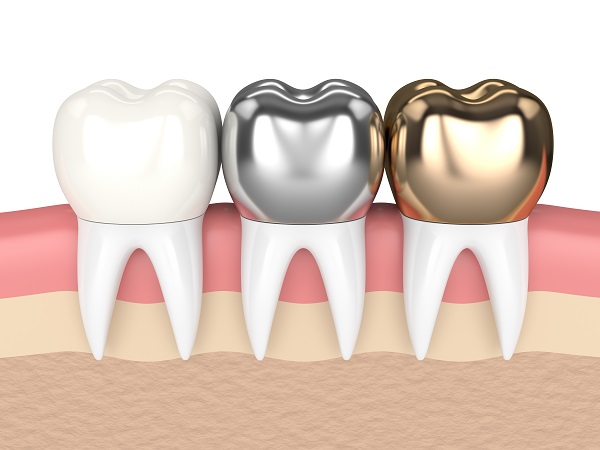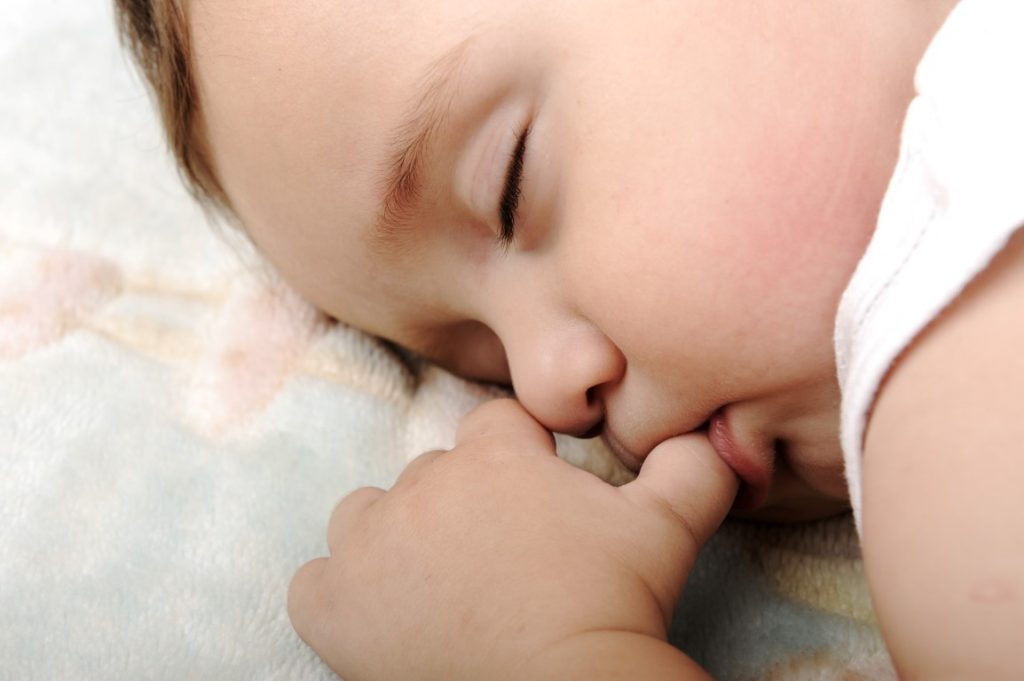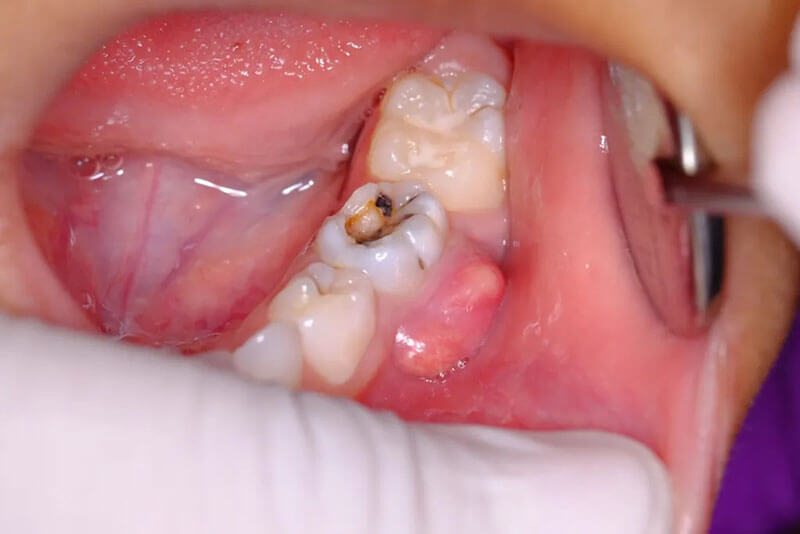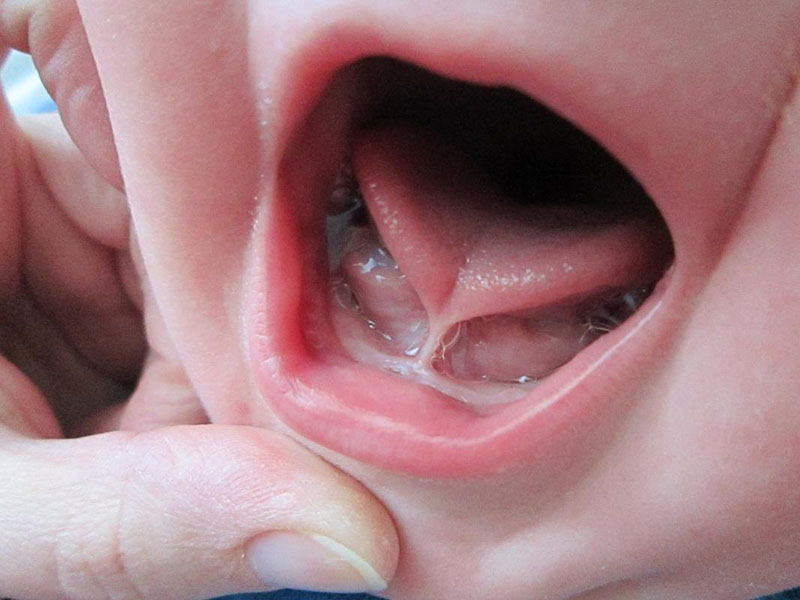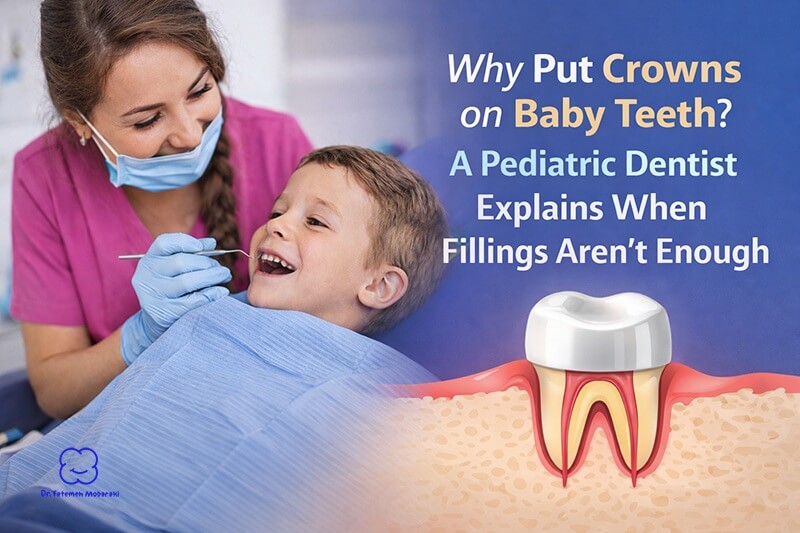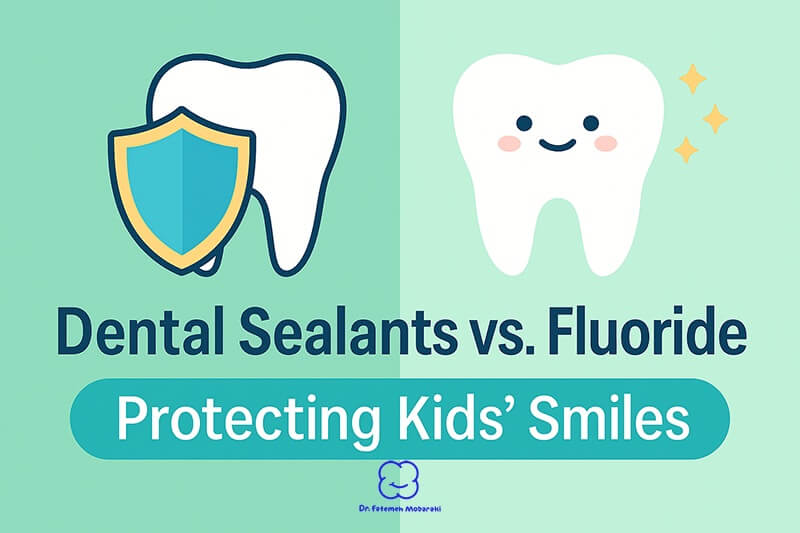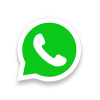Helping your toddler establish a healthy tooth brushing routine can feel challenging, but with patience, practice, and some helpful strategies, it can become a joyful daily activity. Here, we’ll cover simple, practical tooth brushing tips for toddlers, ensuring your child’s teeth stay healthy and bright.
Why Baby Teeth Matter
Many parents wonder: if baby teeth fall out, why does it matter? Here’s why baby teeth are important:
- Chewing and Nutrition: Healthy teeth help kids eat a balanced diet.
- Speech Development: Teeth are essential for making certain sounds.
- Holding Space: Baby teeth keep space for permanent teeth, guiding them into the right position.
- Confidence: A healthy smile boosts self-esteem.
Decay in baby teeth can lead to infections, pain, and problems with adult teeth down the line. Caring for baby teeth helps prevent painful decay and reduces the risk of future dental emergencies, making dental visits smoother and less stressful.
Stages of Oral Care for Children
Establishing a solid oral care routine starts early and evolves with your child’s growth. Here’s how to handle each stage:
- Before the first tooth (0–4 months): Begin by cleaning your baby’s gums using a soft, damp cloth or a silicone finger brush. This helps them get used to the sensation and prepares them for future brushing.
- When the first tooth appears (4–7 months): As soon as you see the first tooth emerge, switch to a small, soft-bristled infant toothbrush. Start brushing twice a day using only water or a grain-sized smear of toothpaste if advised by your dentist.
- Toddler stage (18 months and up): At this age, brushing should happen twice a day using a rice grain-sized amount of fluoride toothpaste. Introduce more structure into the routine while keeping it fun and gentle.
- When teeth touch: Once two teeth are touching, it’s time to introduce flossing. Start with floss picks or floss held between your fingers and guide gently between teeth.
Now let’s dive deeper into brushing strategies and tips specifically for toddlers.
When to Begin Tooth Brushing for Toddlers
Start oral care before your toddler’s teeth even appear. Clean your baby’s gums gently twice a day using a clean, damp cloth wrapped around your finger. This helps them get used to the sensation, making the introduction of a toothbrush easier. When the first tooth appears—typically between four to seven months—switch to a soft-bristled infant toothbrush.
Introducing brushing at this stage builds trust and makes it feel like part of a regular routine. Even though it might not seem important before teeth are fully in, it helps lay a strong foundation for future dental care.
Using the Right Toothpaste and Amount
Fluoride toothpaste protects teeth, but usage varies with your child’s age:
- Under 18 months: Avoid toothpaste unless recommended by your dentist. If necessary, use only a rice grain-sized amount of low-fluoride toothpaste.
- 18 months to 3 years: A rice grain-sized amount of low-fluoride toothpaste is safe to use twice a day.
- 3 to 6 years: A pea-sized amount of toothpaste is ideal.
Supervise brushing to make sure they don’t swallow toothpaste. Young children don’t yet know how to spit effectively, so keeping the amount small is key.
👉 See our guide to the Best Toothpaste for Kids.
Brushing Techniques and Duration
Here’s a simple 2-week “Brushing Boot Camp” to help your toddler get used to brushing without resistance:
| Day | Goal Time | Focus & Activity |
|---|---|---|
| 1 | 10 sec | Let them pick the toothbrush |
| 2 | 15 sec | Brush together in front of mirror |
| 3 | 20 sec | Add silly song while brushing |
| 4 | 30 sec | Introduce timer or brushing app |
| 5 | 40 sec | Let them brush your teeth first |
| 6 | 45 sec | Practice lip lifting gently |
| 7 | 1 min | Focus on brushing all surfaces |
| 8 | 1 min | Introduce floss pick (if needed) |
| 9 | 1 min 15s | Begin storytelling while brushing |
| 10 | 1 min 30s | Try different position (e.g. couch) |
| 11 | 1 min 45s | Add gentle cheek brushing |
| 12 | 1 min 50s | Celebrate with reward chart |
| 13 | 2 min | Let them choose music/timer |
| 14 | 2 min | Full brushing with your assistance |
Use this as a flexible guide—adjust based on your child’s mood and readiness. The goal is progress, not perfection!
Use short, gentle, circular motions or back-and-forth movements at a 45-degree angle to the gums. Brush all surfaces of the teeth—front, back, and chewing surfaces. Don’t forget to brush their tongue and inside cheeks.
- Duration: Aim for two minutes, but start slowly—around five seconds per tooth. If your toddler has eight teeth, 40 seconds is enough at first. Gradually build to two minutes over a two-week period.
If two minutes feels impossible at first, don’t worry. Start small, like 10–15 seconds, and increase over time. Toddlers do better with gradual exposure, especially when they feel in control.
Comfortable Positions for Toddler Tooth Brushing
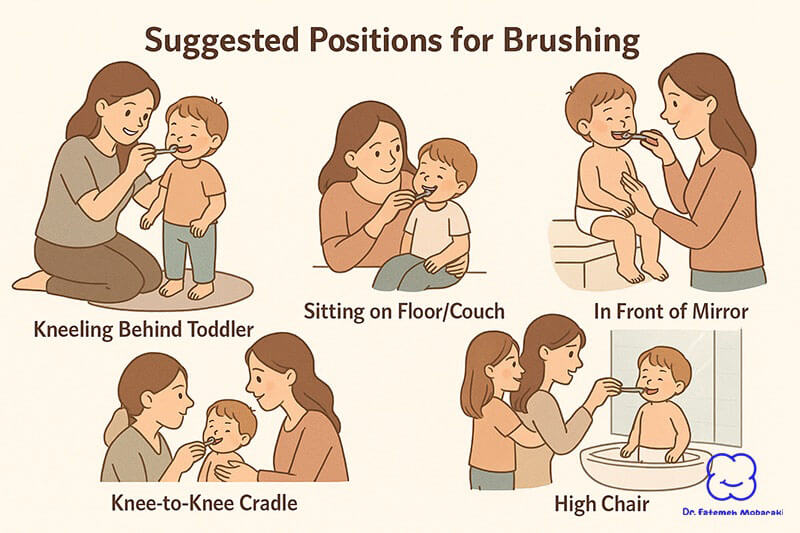
Make brushing comfortable and safe by using positions like:
- High chair: Brushing while your toddler is securely seated in a high chair helps limit movement and keeps your hands free.
- Rocking chair: For sleepy or fussy toddlers, brushing in a familiar rocking chair can help soothe and calm them.
- Kneeling behind your toddler while facing a mirror.
- Sitting on a couch with your toddler’s head in your lap.
- Using a knee-to-knee position with another adult.
You can also sit together in front of a mirror, let them sit on a stool at the sink, or even brush while they’re in the bath. The key is to find a position where you can access their mouth while helping them feel secure.
Avoid lying them flat on a surface or restraining them. This can create fear or resistance.
For best results, choose a position where you have both hands free — one to hold the toothbrush and the other to gently lift your toddler’s lip or support their chin. This allows you to guide brushing more precisely and gently, while your child stays secure but not restricted. A good setup reduces excessive wiggling, promotes comfort, and helps your toddler feel more in control, especially if they can see themselves in a mirror or help choose the brushing spot.
Tooth Brushing Tips for Children: Making It Fun and Effective
Creating a positive experience is one of the most effective tooth brushing tips for kids. Here are some ideas that work well:
- Start Early: Let them explore a toothbrush during playtime. Give them one to hold while you brush their teeth.
- Brush Together: Let them see you brushing your teeth. Kids love copying grown-ups.
- Offer Choices: Let your toddler pick the toothbrush or the spot where you brush. This gives them a sense of control.
- Play Music or Sing: Use a fun two-minute song or make up a silly one to keep things light.
- Pretend Play: Use stuffed animals or dolls to practice brushing. Let your toddler brush their toy’s teeth while you brush theirs.
- Use Videos or Books: Watch short videos about brushing or read picture books about visiting the dentist.
- Celebrate Success: After brushing, give high-fives, do a happy dance, or use a reward chart.
The more fun and relaxed the experience, the more likely your toddler will cooperate.
And if you ever feel unsure whether you’re doing it right, don’t worry—your pediatric dentist in Dubai can help guide you and your child with simple, personalized strategies.
Expert Insight: What the Dental Authorities Say
“Parents should begin brushing their child’s teeth as soon as the first tooth erupts, using a soft-bristled toothbrush and a smear of fluoride toothpaste.” — HealthyChildren.org, AAP-endorsed
This reinforces that early, gentle brushing with the right tools is backed by trusted experts.
When and How to Start Flossing
You don’t need to floss until your child has two teeth that touch. At that point, once a day is enough. Use a short strand of floss (about the length of your toddler’s arm), wrap it around your middle fingers, and gently slide between teeth.
You can also try floss picks made for kids—they’re easier to hold and less intimidating.
Dealing with Resistance and Sensitivity
Even with all the best strategies, brushing can sometimes be a battle. Here’s how to handle it:
- Stay Calm: Toddlers feed off your energy. If you stay relaxed, they’re more likely to settle.
- Acknowledge Their Feelings: “I know you don’t like this, but we have to clean the sugar bugs off your teeth.”
- Go Slow: Don’t push for perfection. Brushing a few teeth well is better than none at all.
- Address Gagging: If they gag, calmly say, “Oops, I went too far,” and move on. Don’t panic—it only reinforces fear.
- Look for Tender Spots: The area under the upper lip (maxillary frenum) can be sensitive. Gently lift this area and use a soft up-and-down motion.
Try brushing while reading a book, watching a video, or letting them hold a toothbrush too. You don’t have to fight them—just make it part of the routine.
Nighttime Brushing and Bottles
Always brush your toddler’s teeth before bed, even if they’re tired. This is one of the most crucial tooth brushing tips for toddlers because nighttime is when saliva production drops, making it easier for bacteria to cause decay.
If your toddler has a bottle at night, try to wean them off it gradually. Never send them to bed with milk or juice—it can pool around their teeth and lead to decay.
If they must have something, water is safest.
Replacing Toothbrushes and Brushing Tools
Change your toddler’s toothbrush every 3 months, or sooner if bristles are frayed. A worn-out brush doesn’t clean well and can be uncomfortable.
Also, replace it after illness to avoid reintroducing germs into the mouth.
Some toddlers prefer electric toothbrushes. These can be effective but should have soft bristles and small heads. Let your child try both manual and electric to see what they like best.
👉 For recommendations, check out our post on the Best Toothbrush for Kids.
Common Mistakes Parents Make (And How to Fix Them)
Here are some common mistakes parents make during toddler tooth brushing—and how to correct them:
- Using too much toothpaste: A common mistake is applying a large blob of toothpaste. For toddlers under 3, a grain-of-rice size is enough. Too much fluoride can cause fluorosis in children.
- Skipping brushing on busy days: Consistency is critical—even if it’s just a quick 30-second clean on a tough night. Skipping leads to confusion and habit disruption.
- Letting toddlers brush completely on their own: Children under age 7–8 usually don’t have the coordination to brush thoroughly. Always supervise and help.
- Brushing too hard: Aggressive brushing can hurt sensitive gums. Be gentle and slow—think of it like polishing, not scrubbing.
- Starting brushing too late: Waiting until several teeth erupt is too late. Begin oral care as soon as the first tooth appears—or even before, with gum cleaning.
- Wrong toothbrush size or hardness: Adult-sized or hard-bristled brushes can hurt little mouths. Choose soft, small-headed brushes made for infants and toddlers.
- Letting toddlers chew on the toothbrush: Many toddlers just chew the brush instead of brushing. While this is part of exploration, always follow up with real brushing.
- Rinsing with water after brushing: Rinsing washes away the protective fluoride layer. Teach your child to spit, not rinse.
Correcting these mistakes early will make your routine smoother and your toddler’s mouth healthier.
When to Visit the Pediatric Dentist
Your toddler should see a pediatric dentist by age one or within six months of their first tooth. Early visits help detect issues and get your child comfortable with dental care.
Your dentist can:
- Show you how to brush effectively
- Check for early signs of decay
- Offer advice tailored to your child’s needs
And if brushing feels like a constant struggle, your dentist can connect you with an occupational therapist or offer desensitization strategies.
A Note from Dr. Fatemeh
As both a pediatric dentist and a mom, I completely understand how frustrating tooth brushing can be—especially after a long day. I’ve worked with many families who feel overwhelmed, guilty, or simply stuck. Please know this: every small effort counts. Whether your toddler lets you brush for 20 seconds or 2 minutes, what matters most is your love, consistency, and willingness to try again tomorrow. You’re doing an amazing job, and I’m here if you ever need support.
Final Thoughts
Tooth brushing doesn’t have to be a fight. With the right approach, your toddler can learn that it’s a safe, positive, even fun part of their day. These tooth brushing tips for toddlers are designed to meet you where you are—with empathy, accuracy, and a lot of love.
Healthy habits today lay the foundation for a lifetime of strong smiles.
FAQ: Tooth Brushing Tips for Children
1. When should I start brushing my baby’s teeth?
As soon as the first tooth appears—usually between 4–7 months. Before that, clean the gums twice daily with a soft, damp cloth.
2. What if my toddler refuses to brush their teeth?
Stay calm and consistent. Make it fun with songs, choices, and games. If resistance continues after two weeks, consult your pediatric dentist or an occupational therapist.
3. Can I use an electric toothbrush for my toddler?
Yes, as long as it’s designed for children—soft bristles, a small head, and quiet operation. Let them try both manual and electric to see what they prefer.
4. How do I know if I’m brushing long enough?
Aim for two minutes, but it’s okay to build up slowly. Even 30–60 seconds is a great start for toddlers. Use a song or timer to help track.


